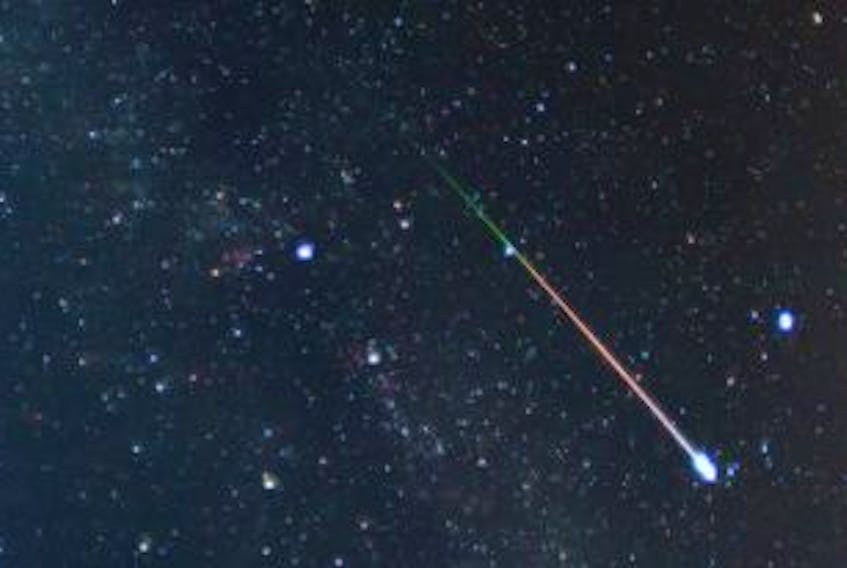This year, however, features a bright waning gibbous moon, meaning the moon is about 70 per cent illuminated, making the astronomical show a little bit more difficult to see without a telescope.
Robert Babb, a member of the Royal Astronomical Society of Canada in St. John’s, gave The Telegram a few pointers for any Newfoundland stargazers who might be interested in heading out and observing the celestial show:
• Get out of town. The darker it is, the better. With the gibbous moon also visible in the night sky this weekend, you’ll have a much easier time seeing dimmer meteors if you stay away from city lights.
• Stay comfortable. Bring a chair or blanket that allows you to lean back and see as much of the sky as possible.
• Bring friends, and keep track of how many meteors you see. The more, the merrier. Not only can you watch multiple parts of the sky with extra eyes, you can brag to those who missed it.
• Give yourself time. The meteors often come in spurts and lulls, so plan to be out for at least an hour, if not longer.
• Don’t forget to bring insect repellant. It is Newfoundland, after all. They will eat you alive.
Those still around just before dawn might be lucky enough to catch a glimpse of Venus — the third-brightest object in the sky — ascending in the east.
But if you miss the action, no need to fret — there’s always next year.









